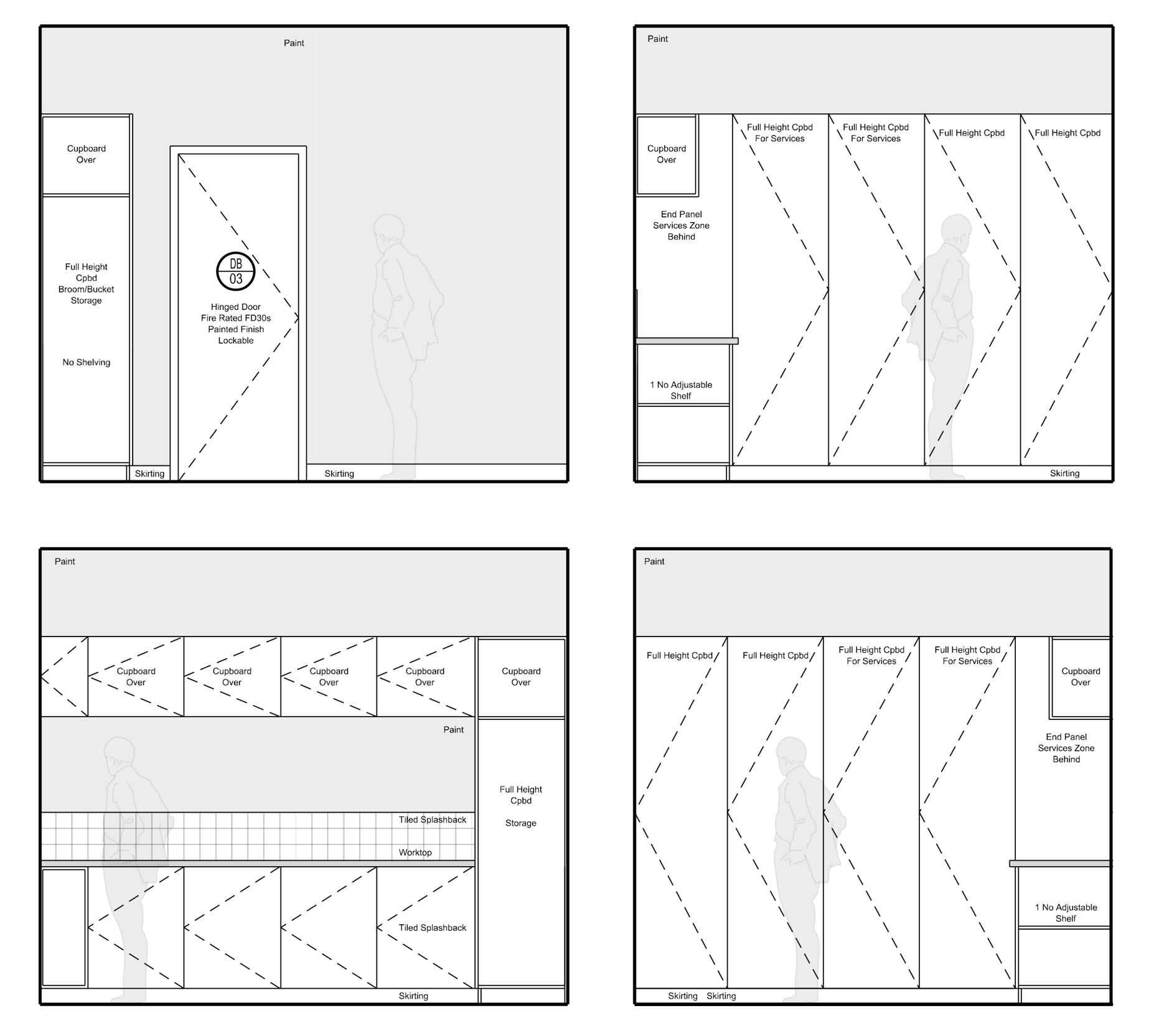Utility Rooms in Residential Refurbishment
In recent years, there has been a clear shift in how we approach a domestic space. Where the kitchen was once the undisputed centre of household life, it is now being rebalanced with a renewed focus on utility spaces. This is not about reducing the role of the kitchen but about addressing the growing demand for practicality and order in modern homes. The utility room, once a secondary consideration or omitted entirely, is increasingly seen as an essential space and is being integrated from the outset of the design process.
Too often in the UK, the utility room is treated as a leftover space. This misses the broader cultural change that is taking place. Clients are no longer looking to conceal the washing machine. They want a dedicated area for laundry, drying, storage and cleaning, all designed with purpose. A properly considered utility space can reduce pressure on the kitchen, buffer sound between rooms and ultimately improve quality of life.
This approach is standard in many Northern European countries. In Finland or Sweden, for example, the idea of placing a washing machine in the kitchen would be unorthodox. Laundry is treated as a specific household function, deserving of its own room or defined space, with ventilation, daylight and suitable finishes provided as a matter of course; it reflects a broader cultural respect for domestic life and for spaces that are expected to work hard every day.
In the UK, where wet weather limits opportunities for outdoor drying for much of the year, it makes even more sense to provide interior spaces that can handle laundry effectively. These rooms are not decorative additions. They are integral to how homes function over time, and their value is best realised when they are designed from the beginning rather than retrofitted later.
Key Design Considerations
When developing a utility room, careful planning and appropriate specification are essential. These are not spaces to be defined as an afterthought. They should be approached with the same attention to layout, materiality and performance as any other core part of the home.
Material durability
This is a working environment. Surfaces must be robust and easy to maintain. Avoid porous stone and soft timber. Specify compact laminate worktops, wipeable wall finishes and cabinetry that can tolerate moisture and regular use.
Ventilation
Moisture control is vital. Mechanical extraction should be designed to meet the required air change rate, ideally with a humidity sensor to manage drying periods efficiently.
Acoustic control
Noise generated by laundry appliances can readily transfer into adjacent rooms. To mitigate this, partitions should be detailed with appropriate acoustic insulation and double plasterboard, following manufacturer guidance such as that provided by British Gypsum. Solid-core doors are recommended to further reduce sound transmission. Where budget allows, appliances should be placed on anti-vibration pads or mounted on a plinth incorporating acoustic separation layers.
Storage and utility zoning
Consider the full function of the room. Beyond appliances, where will detergents, laundry baskets, brooms and tools be stored? Where are the meters or manifolds? Tall cupboards with integrated shelves and service access zones allow the room to function efficiently without clutter.
Lighting and power
These spaces are task-focused. Lighting should be even and functional. A linear LED above the worktop or a ceiling bulkhead fitting often works better than recessed downlights. Sockets should be positioned above counter height and sufficient in number to avoid trailing cables.
A well-planned utility space can also accommodate essential plant, such as a hot water cylinder, boiler or MVHR system. Locating these here instead of in hallways or bathrooms can streamline services and reduce disruption across the rest of the plan.
Planning and Integration
In compact homes and refurbishment projects, space is often limited. However, with early consideration and thoughtful planning, a utility room can be introduced without compromising the rest of the layout.
Start early
If the need for a utility space is not raised at feasibility stage, it can be difficult to introduce without sacrificing something else later. Even a room of 1.8 by 1.6 metres, if well planned, can deliver major functional benefits. Prioritising the utility room early in the build can improve site logistics and help manage temporary services. It often becomes the temporary sink, tool zone or power hub, so completing it early avoids repeated disruption.
Cost-effective specification
Good design does not need to be expensive. Affordable cabinetry, standard carcasses, robust factory-laminated worktops and basic but effective fittings can deliver excellent results. Presented properly, the utility room becomes a selling point rather than a compromise.
Conclusion
The expectation that the kitchen can perform every domestic role is increasingly unsustainable. As homes evolve and become more efficient, the utility room is re-emerging as a vital component of residential life. It supports daily routines, conceals the less glamorous but essential parts of living, and protects other spaces from wear and noise.
By integrating utility rooms with care, early in the process and with an understanding of how they will be used, we can create homes that function more efficiently, age more gracefully and deliver better value for clients in the long term



